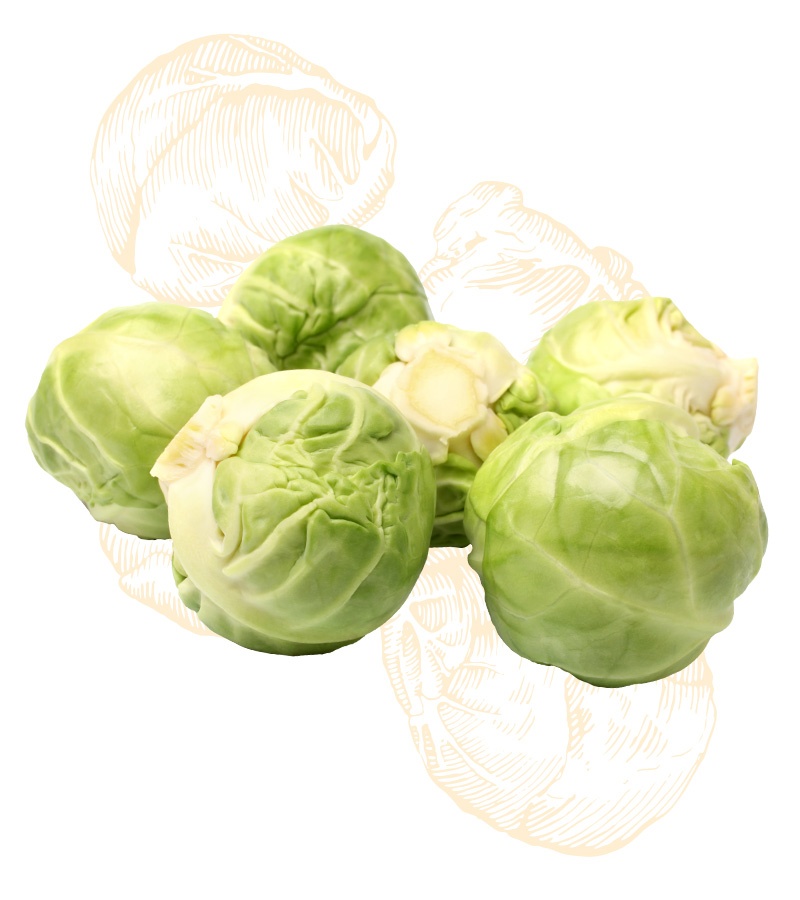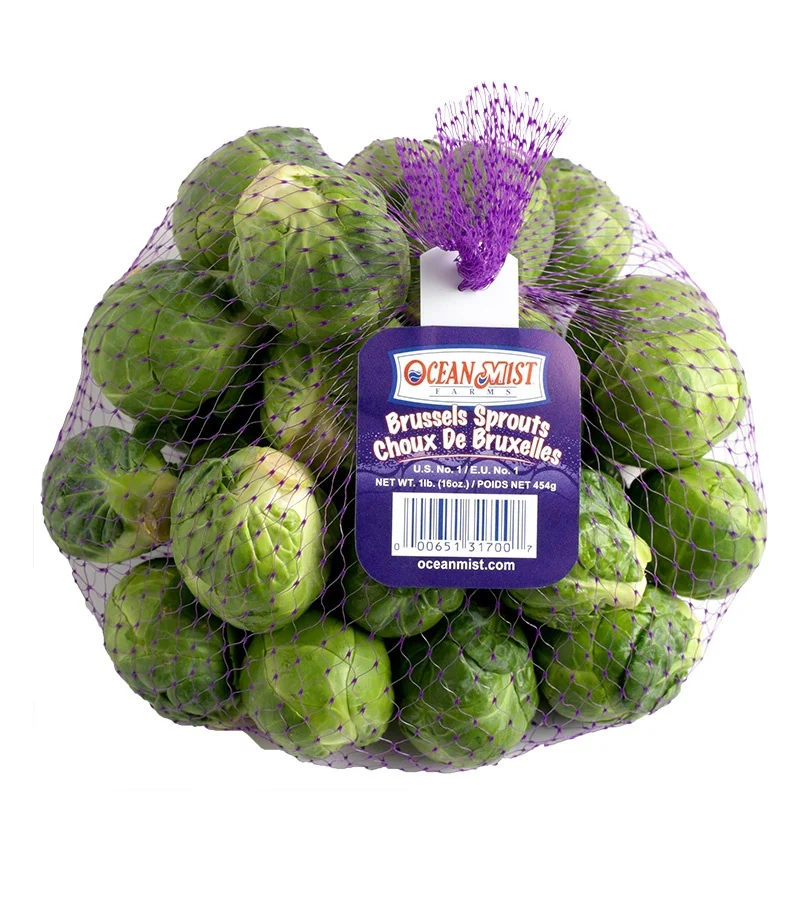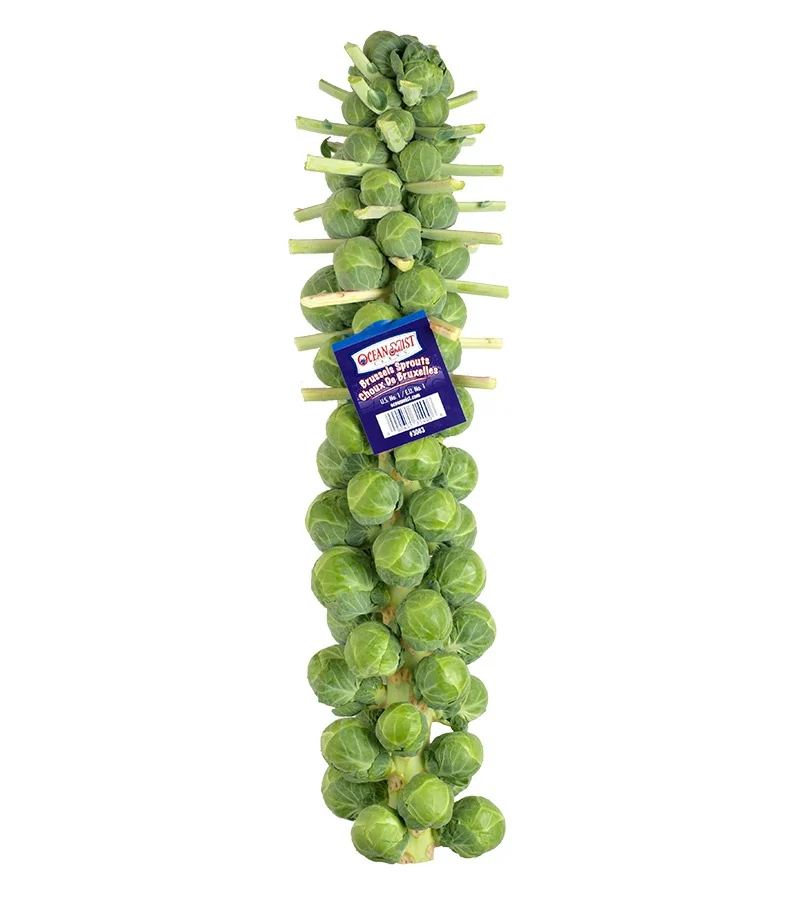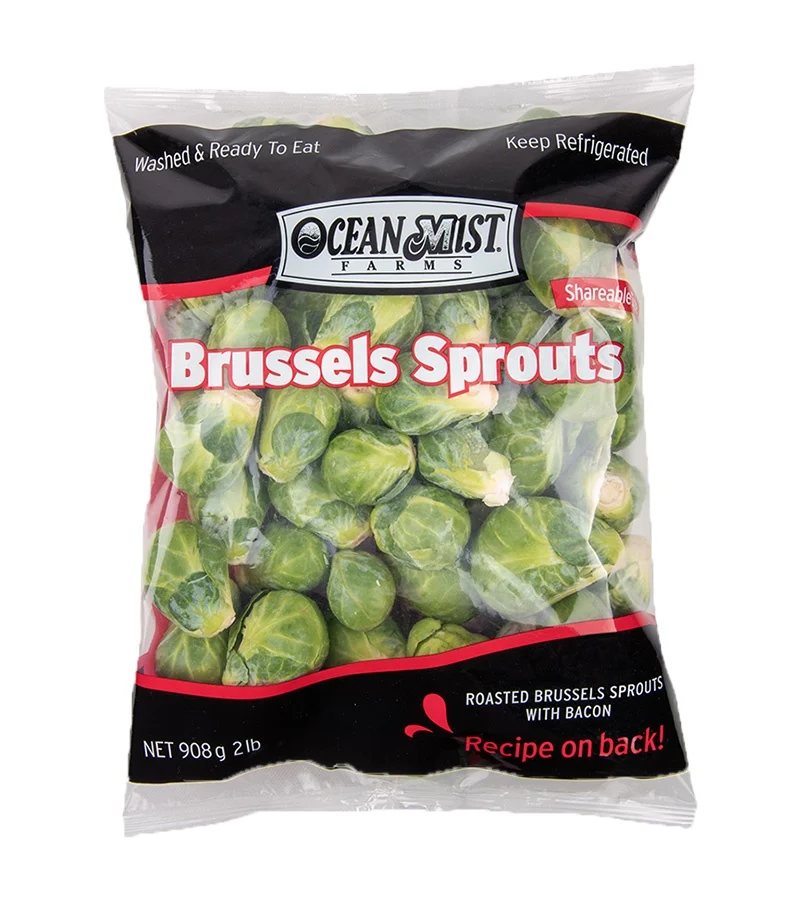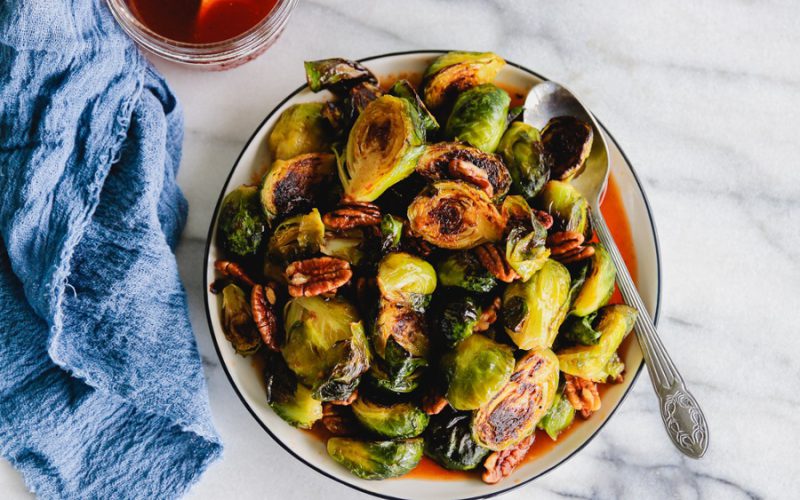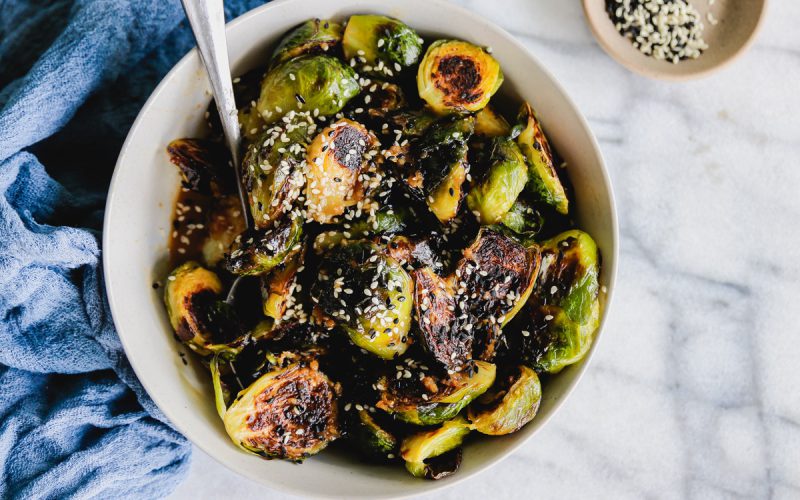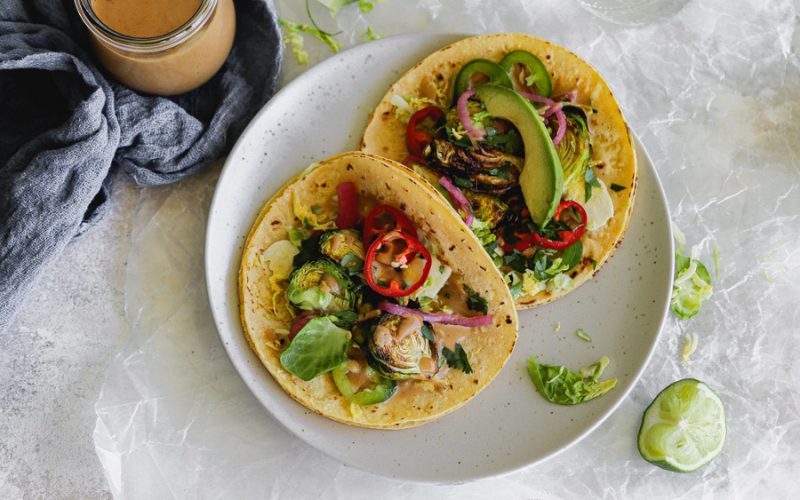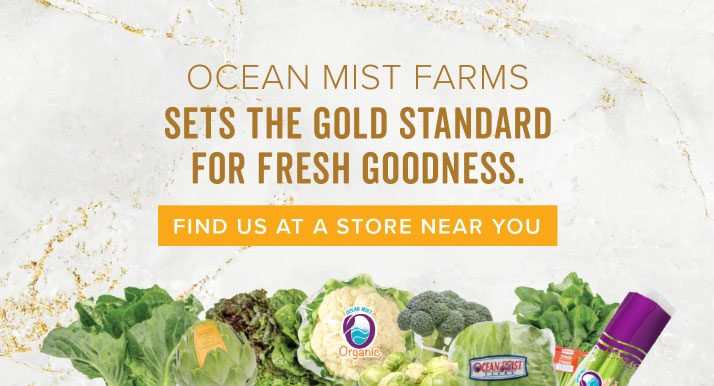Brussels Sprouts
This delightful and nutrition-rich vegetable may look like cabbage, but has a denser texture and milder flavor. One of the few vegetables to originate in northern Europe, Brussels sprouts got their name from being cultivated near the Belgian capital in the late 16th century. After World War I, cultivation grew throughout Europe. They’re still hugely popular in Great Britain, where some consider it the national vegetable.
Nutritional Information
- Low in fat and sodium
- Good source of dietary fiber and cholesterol-free
- Contains high levels of naturally occurring vitamin C
Selection Tips
- Pick bright green, evenly shaped and firm sprouts that feel heavy for their size.
- Avoid puffy sprouts with black spotting or yellow leaves.
- Choose similar-sized sprouts for even cooking times.
Storage and Handling
- Keep unwashed Brussels sprouts in a plastic or paper bag in the crisper section of the refrigerator for up to a week.
- Rinse with cold water and drain. Trim stem ends without cutting the base of leaves or the Brussels sprouts will come apart during cooking. Some chefs recommend cutting a shallow “x” in the base of sprouts, so the stems will cook faster.
Nutrition Facts
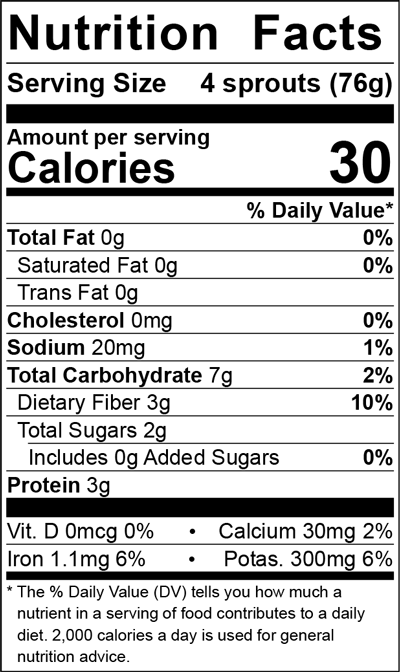
Growing &
Harvest
Ocean Mist Farms artichokes are grown year-round in multiple growing regions throughout Southern California. Every artichoke plant is hand-harvested up to 30 times per season which allows our harvest crews to carefully select artichokes that fit Ocean Mist Farms’ stringent quality standards.
Artichokes are removed from the plant by slicing the stalk just below the base of the artichoke, leaving an edible stem attached.
Watch our baby artichoke video to learn more about how to prepare artichokes from Ocean Mist Farms.

